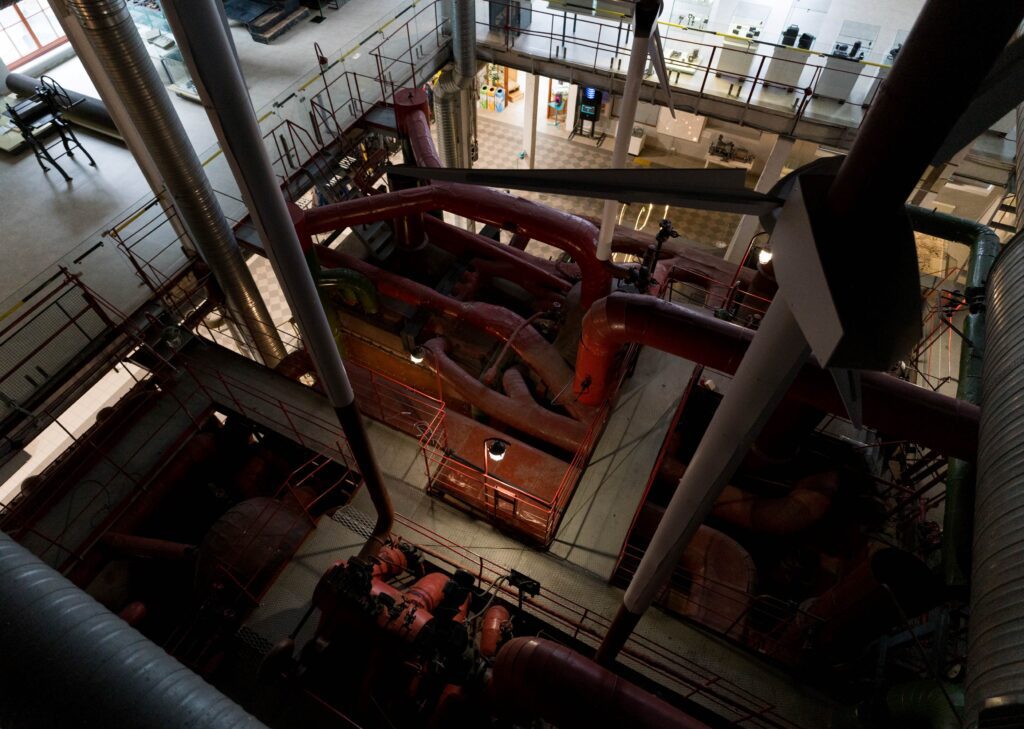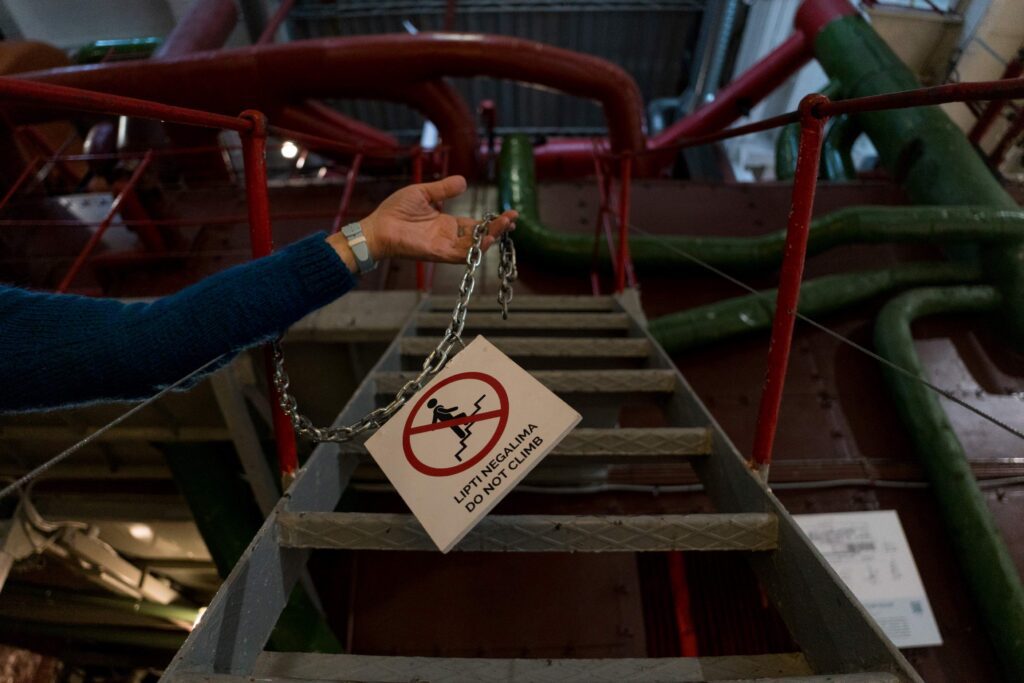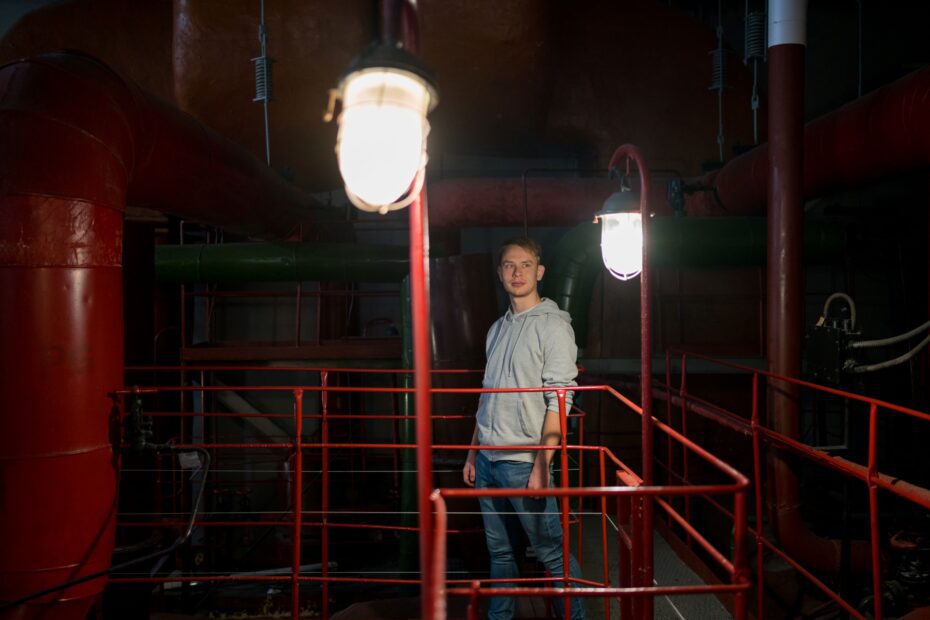The Energy and Technology Museum is implementing a project to open a walking trail on the historic steam boilers of the former power plant.
The steam boilers are the largest exhibits of this power plant. The first Vilnius Central Power Plant started operating in 1903 and later supplied steam and hot water to Vilnius residents and city businesses. The plant was completely shut down in 1998 and the Energy and Technology Museum opened in 2003 to celebrate its 100th anniversary.
Today, the buildings of the first public power plant and their authentic equipment are recognised as state-protected technical heritage.


Interactive cultural heritage
The project “Making cultural heritage a reality: making historic steam boilers accessible to visitors” aimed to create a new interactive exhibition trail on the large power plant units. Previously, the boilers were used by the staff of the capital’s first public power station for maintenance and repair work.
“Although the passages have been preserved, until now, visitors were not allowed to climb up here because the structures were not designed for a large number of people, and it was not determined how many visitors they could safely withstand,” said the project’s author, Andžej Kuldoš, curator of the electronics workshop at the Energy and Technology Museum. – During the project, we reinforced the paths and made them safe. We are currently working on an interactive sound system, which will help visitors to learn about the valuable features of the exhibits – to hear the history of the steam boilers, which is closely linked to the history of the modernisation of Vilnius.”


One of the safest power plants
The steam boiler walkway is equipped with sensors and an audio guide that tells visitors how the boilers came into being, why the power plant was necessary for the capital’s population, and the daily routine of its employees.
The narrative is the result of meetings with engineers and former employees of the plant. Most of them are active members of the Lithuanian Energy Seniors’ Club. “The power engineers talked about the nature of their extraordinary work. For example, once a year, they would sneak into the normally hermetic boiler to check the pipes for any lime that might be building up and clean them out. However, for safety reasons, there was never just one person going into the boiler, but always two, with another colleague waiting outside,” said A. Kuldoš.


“Steinmueller” boiler installation. Photo from the archive of the Energy and Technology Museum
The plant’s engineers have themselves installed a number of technical and automatic safety improvements, so that emergencies rarely occured. “There have been no significant accidents in Lithuania. They used to happen in the Soviet Union, and then instructions were issued on how to fix the equipment, and they were installed in other power plants as a precautionary measure,” said the project’s author. – As the senior power engineers said, the most important thing for a power plant is to have qualified staff and to comply with safety requirements because, in their words, all safety instructions are written in blood.”
Visitors need innovation
When the power station was in operation, the temperature in the passages above the boilers was 50 degrees. Inside the steam boiler, the pressure was 13 atmospheres and the temperature 1400 degrees. The steam produced in the boiler was heated to 370 degrees. When the boiler had to be cleaned, the working conditions were not comfortable: even when the steam boiler was cooled, it was around 100 degrees hot and contaminated with soot and slag.


All this will be revealed when the steam boiler walkway opens to the public. According to Mykolas Bistrickas, director of the Energy and Technology Museum, dynamic and interactive exhibitions based on innovation are important for today’s visitor.
“The historically significant steam boilers have been out of use since 1998 and I am delighted that we are implementing a project to present them in a new way. Using modern technology, we are bringing cultural heritage up to date. We recognise and respond to the ever-growing demand from visitors for modern museums where they can experience science and history interactively. The opening of the historic steam boilers will encourage exploration and understanding of how historic energy advances paved the way for the technological innovations we enjoy today,” said Bistrickas.


The project is financed by the Lithuanian Council for Culture and Vilnius City Municipality. Partner – Lithuanian Energy Seniors’ Club.

